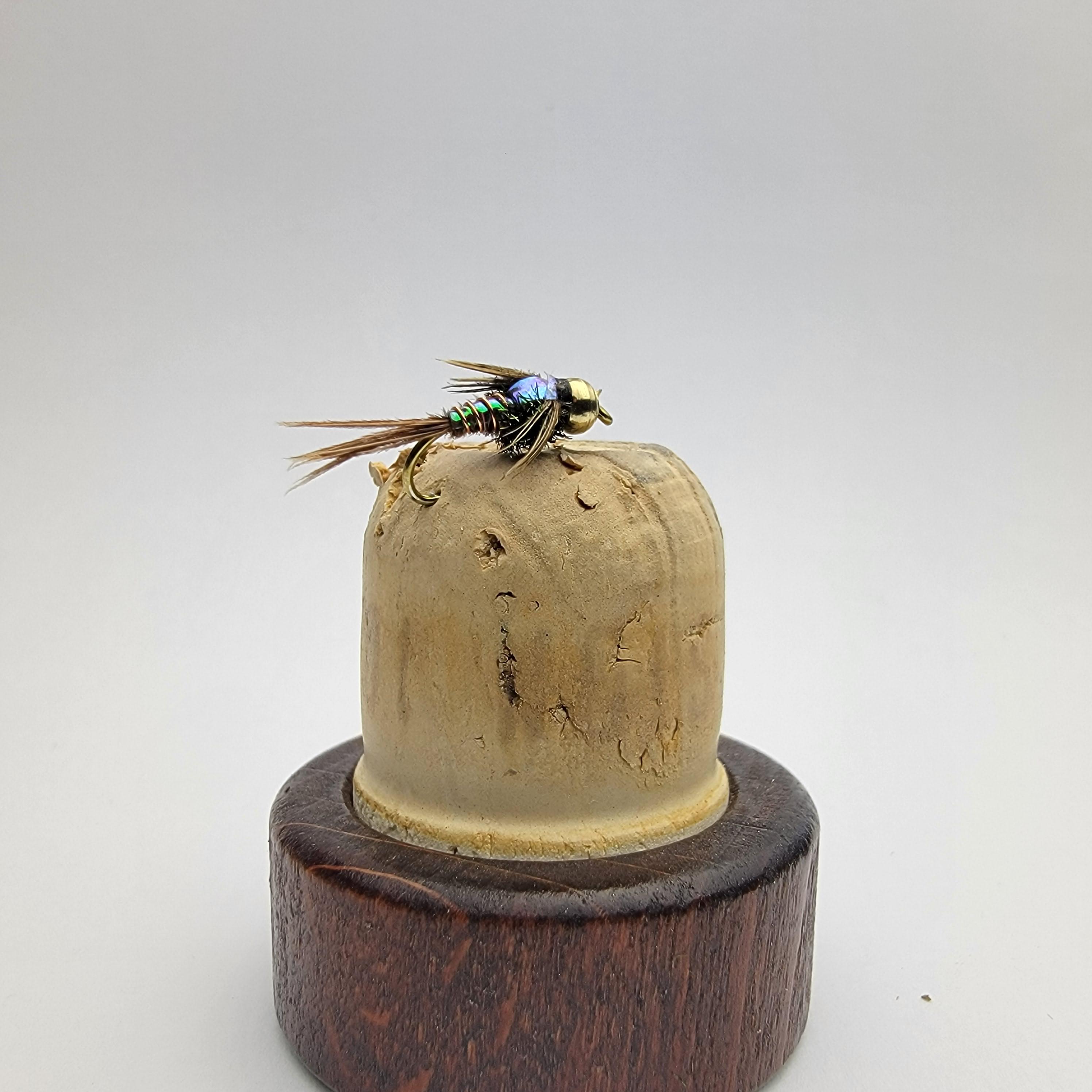Learn how to tie the stimulator fly like a pro and improve your fly fishing game with these essential tips.
Understanding the Stimulator Fly

The stimulator fly is a versatile and highly effective pattern used in fly fishing. It imitates a variety of insects, including stoneflies, caddisflies, and grasshoppers. The fly features a buoyant elk hair wing and a segmented body made of dubbing or chenille. Its distinctive silhouette and lively action make it a favorite among anglers.
To understand the stimulator fly, it's important to study the insects it represents. Stoneflies, for example, have a robust body with two pairs of wings. They are commonly found near rivers and streams and are a vital food source for fish. Caddisflies, on the other hand, have tent-shaped wings and are known for their erratic flight patterns. Grasshoppers have a distinct shape, with long, slender bodies and large wings. By studying these insects, you can gain a better understanding of how to fish with the stimulator fly.
Selecting the Right Materials
-1.png?width=800&height=450&name=Untitled%20design%20(30)-1.png)
To tie the stimulator fly, you'll need a few key materials. These include elk hair, dubbing or chenille, hackle feathers, and thread. When selecting elk hair for the wing, look for long, hollow fibers that are buoyant and provide good flotation. The body can be made of dubbing or chenille, both of which come in various colors to imitate different insects.
For the hackle feathers, choose ones that are stiff and have long barbs. These feathers are used to create the legs and give the fly its lifelike appearance. Finally, use a strong thread that matches the color of the fly to secure the materials in place.
Step-by-Step Tying Process
1. Start by attaching the thread to the hook and creating a base layer.
2. Select a clump of elk hair and measure it against the hook to determine the length of the wing. Trim off the excess hair.
3. Tie the elk hair wing to the top of the hook, making sure it extends slightly beyond the bend of the hook.
4. Create a dubbing loop with the thread and twist the dubbing or chenille onto it. Wrap the dubbing or chenille around the hook to form the body, leaving enough space for the hackle and head.
5. Prepare a hackle feather by stripping off the lower fibers. Tie the feather to the hook and wrap it around the body, creating the legs.
6. Build a small thread head to secure the materials and finish off the fly. Trim any excess thread.
7. Apply a small amount of head cement or super glue to ensure the durability of the fly.
Adding Finishing Touches
To enhance the effectiveness of the stimulator fly, you can add a few finishing touches. One option is to apply floatant or dry fly powder to the elk hair wing. This will help the fly stay afloat on the water's surface and imitate the natural movement of an insect.
Another option is to add a small amount of flash material to the body or wing of the fly. This can mimic the shimmering effect of an insect's wings and attract the attention of fish. Experiment with different colors and amounts to find what works best in your fishing environment.
Tips for Fishing with the Stimulator Fly
-1.png?width=600&height=400&name=fly%20fishing%20in%20colorado%20(18)-1.png)
When fishing with the stimulator fly, it's important to keep a few tips in mind. First, pay attention to the size and color of the fly. Match the size and color to the insects that are present in the water. This will increase your chances of attracting fish.
Second, vary your retrieve speed and depth to imitate the natural movement of the insects. Sometimes a slow, steady retrieve will work, while other times a quick, jerky retrieve will be more effective. Experiment with different techniques to see what triggers the most strikes.
Lastly, don't be afraid to fish the stimulator fly in different water conditions. It can be effective in both calm water and fast-moving currents. Keep an eye out for rising fish or areas with structure, as these are often prime spots for using the stimulator fly.
By mastering the art of tying and fishing with the stimulator fly, you'll have a versatile and effective pattern in your fly box. Whether you're targeting trout in a mountain stream or bass in a river, the stimulator fly is sure to attract attention and help you land more fish.
.png?width=300&height=100&name=Copy%20of%20Rise%20Beyond%20Logo%2012.31.24%20(300%20x%20100%20px).png)
.png)


